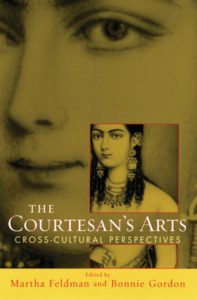Available for free download here.
Abstract
“This thesis examines the representation of the lives and performances of tawa’if and rudali in South Asian cinema to understand their marginalization as performers, and their significance in the collective consciousness of the producers and consumers of Indian cultural artifacts. The critical textual analysis of six South Asian films reveals these women as caste-amorphous within the system of social stratification in India, and therefore captivating in the potential they present to achieve a complex and multi-faceted definition of culture. Qualitative interviews with 4 Indian classical dance instructors in Portland, Oregon and performative observations of dance events indicate the importance of these performers in perpetuating and developing Indian cultural artifacts, and illustrate the value of a multi layered, performative methodological approach. These findings suggest that marginality in performance is a useful and dynamic site from which to investigate the processes of cultural communication, producing findings that augment sole textual analysis.”
Notes
This is an excellent text for the beginning scholar of Tawa’ifs because there is extensive contextualization: just some of the many sections of the thesis include definitions and contextual information; thematization of films including classism, gender, fatalism, ambivalence, and mysticism; and detailed summaries of major tawa’if films, including Pakeezah, Umrao Jaan (1981 and 2006), Rudaali, and Devdas (1955 and 2002).

